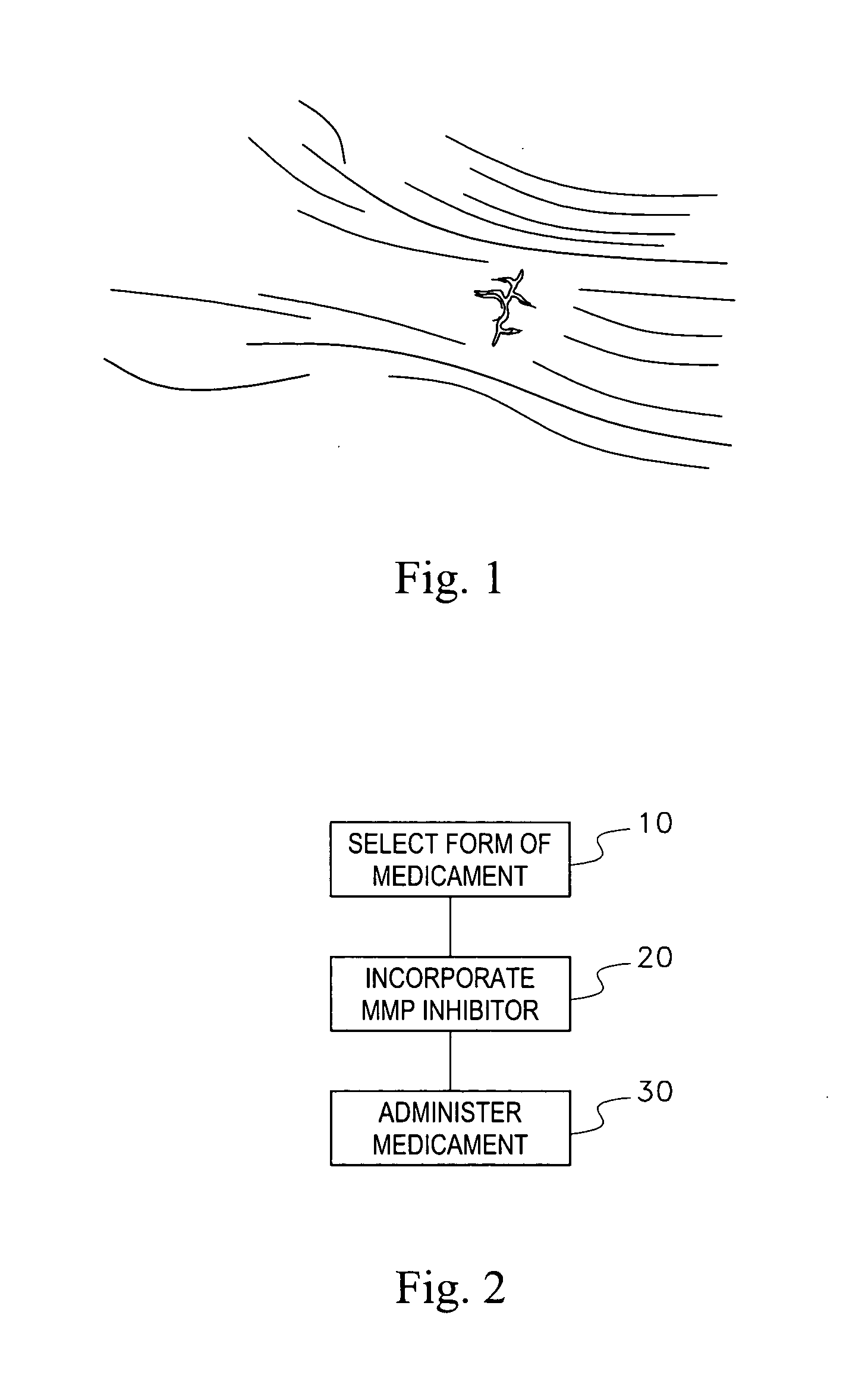Methods, systems and reagents for tendon and ligament therapy
a technology of reagents and reagents, applied in the field of tendon and ligament therapy, can solve the problems of reducing healing, limiting healing, and interrupting cell behavior in the connective tissue, so as to prevent or treat fibrous connective tissue degradation and prevent extracellular matrix degradation
- Summary
- Abstract
- Description
- Claims
- Application Information
AI Technical Summary
Benefits of technology
Problems solved by technology
Method used
Image
Examples
Embodiment Construction
[0014]FIGS. 1 and 2 illustrate a common injury in a tendon or ligament, healing and recovery of which are assisted by the use and delivery of matrix metalloproteinase (MMP) inhibitors.
[0015] Referring now to FIG. 1, degradation and / or denaturization of fibrous connective tissues comprising extracellular matrix components, especially of collagen-comprising tissues, may occur in a tendon or ligament in connection with many different pathological conditions and with surgical or cosmetic procedures. However, the mechanism and control of the degradation of the fibrous connective tissues is still poorly understood. Some degree of degradation appears to be part of the healing process, but the trigger for such is not known. However, the involvement of MMPs in degradation of tissues and, for example, the creation of scar tissue, and the utility of MMP inhibitors according to the present invention in the inhibition, i.e. prevention, restriction and hindering, of degradation has been confirme...
PUM
| Property | Measurement | Unit |
|---|---|---|
| Concentration | aaaaa | aaaaa |
| Power | aaaaa | aaaaa |
| Power | aaaaa | aaaaa |
Abstract
Description
Claims
Application Information
 Login to View More
Login to View More - R&D
- Intellectual Property
- Life Sciences
- Materials
- Tech Scout
- Unparalleled Data Quality
- Higher Quality Content
- 60% Fewer Hallucinations
Browse by: Latest US Patents, China's latest patents, Technical Efficacy Thesaurus, Application Domain, Technology Topic, Popular Technical Reports.
© 2025 PatSnap. All rights reserved.Legal|Privacy policy|Modern Slavery Act Transparency Statement|Sitemap|About US| Contact US: help@patsnap.com

